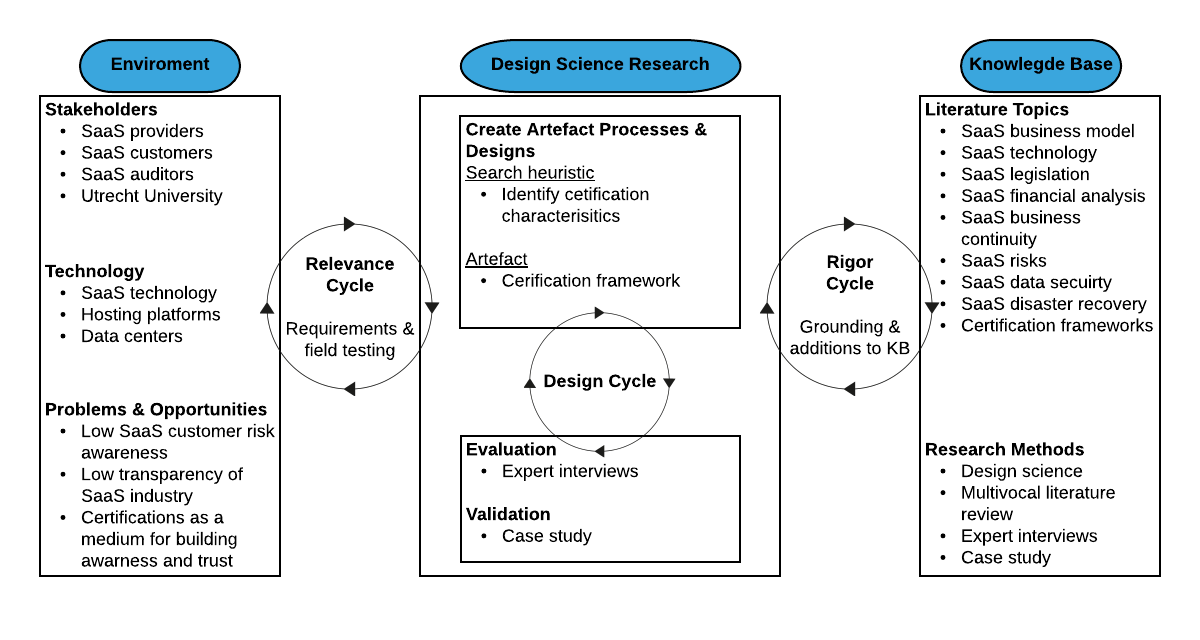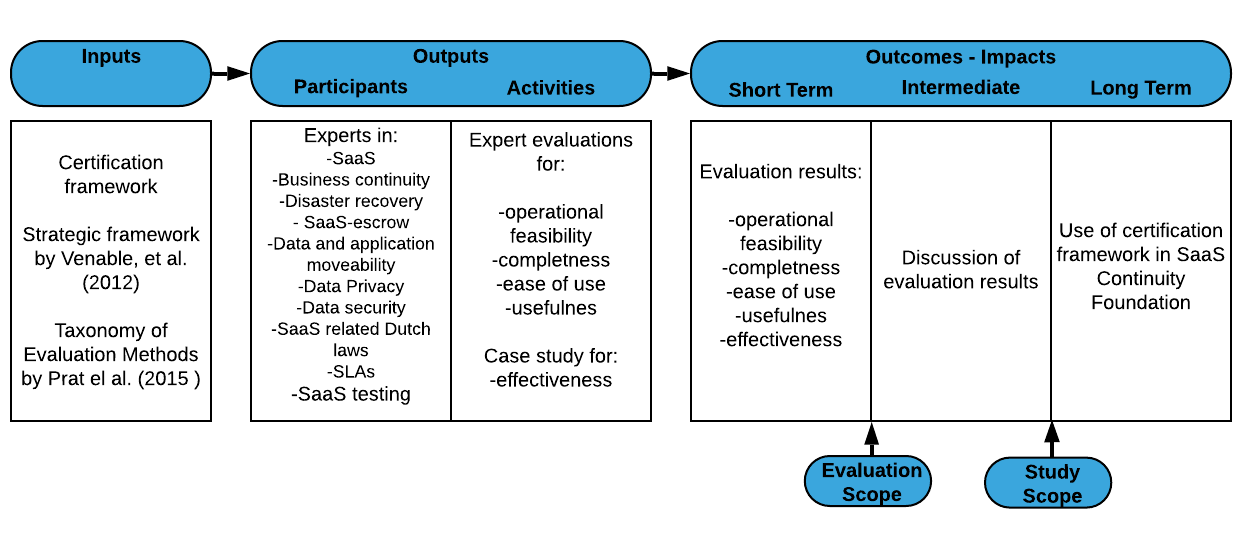Research Methodology
To produce the desired artefact, the Design Science Research methodology by Henver and Chatterjee (2010) seen below is used. This study makes use of three research methods: (1) a literature study to identify possible characteristics of the framework design, (2) expert interviews as the first round of evaluations of the draft framework, and (3) multiple case studies to validate the latest version of the framework.

Framework Evaluation
In order to correctly report this evaluation, the reporting model proposed by Shrestha, Cater-steel, and Toleman (2014) is adopted. The figure below presents the structure of the evaluation protocol in terms of: (1) its inputs which are the artefact and the evaluation strategy used; (2) its outputs which cover the participants and the activities of the evaluation process; and (3) its outcomes from the evaluation in terms of immediate findings, their discussion and long-term impacts.

Operational Feasibility
To what degree do the experts see the framework being used by individuals in practice?
Ease of Use
What is the degree of difficulty associated with gathering the information required by framework?
Completeness
To what degree does the framework assess critical risk concepts relating to a SaaS continuity guarantee, and contain necessary questions for adequately assessing these concepts?
Usefulness
To what degree does the framework extract insightful information for awarding a certification mark?
Effectiveness
To what degree do insights gathered portray the level of risk associated with a SaaS continuity guarantee?